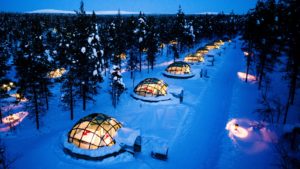
The UN’s International Day of Happiness dates from 2013.
The first day of spring usually conjures up images of birds singing, fruit trees and daffodils blooming, melting snows providing new sustenance to streams and rivers, and a general rebirth of life. The optimistic phrase “Spring is in the air” sums it up nicely.
Alas, the East Coast of the U.S. is being hit by another blast of snow and ice, according to reports. Here in Tucson the skies are sunny, the air is crisp and the birds are singing, but if you’re beset by storms, you don’t want to hear that.
What you want to hear is that March 20 is also World Happiness Day.
Officially known as the International Day of Happiness, March 20 (the Vernal Equinox) has been celebrated as such under the aegis of the United Nations since 2013.
Naturally, the UN has issued an annual report, known as the World Happiness Report, which attempts to measure the world’s happiest countries by how they stack up against six key factors: income, freedom, trust, healthy life expectancy, social support, and generosity.
Whether these factors actually make for happiness is a topic for debate, but there’s little debate as to which region of the world comes out on top year after year: Northern Europe, and more precisely, Scandinavia.
Finland Tops 2018 Happiness List
According to the index, The World’s Happiest Country this year is Finland, perhaps best known as a land of saunas, Vodka, and reindeer (Santa Claus even has his own village there).
I’ve been lucky enough to travel to Finland three times — once in the dead of winter in a town right on the Arctic Circle, when the only “sunlight” was a few hours of pink glow on the horizon — and I can vouch that there’s no greater feeling of happiness than dashing out of a steaming sauna in the dark of a sub-zero night and diving into an ice-cold snowbank.

“Igloos” in the Finnish winter allow for ski-in, ski-out experiences. Photo from VisitFinland.com/Angela Chow
At least, that’s what the wacky Finns told me before I made an idiot of myself doing just that.
In summertime — when the sun shines nearly all day and night — Finland’s cities come alive with music festivals, open-air markets brimming with fresh produce and flowers, and ferries carrying holidaymakers off to picnics on offshore islands.
Just about every Finn, it seems, also has a cottage to escape to on a lake somewhere where they can have a sauna and then jump into said lake, perhaps followed by a beer and reindeer meat snack.
Three other Scandinavian countries — Norway, Denmark, and Iceland — as well as Switzerland have topped the ranking in previous years, an indication that immense natural beauty, little open-faced sandwiches topped with meats and cheeses, cross-country skiing, and trains that run on time may also play vital roles in creating happiness.
Certainly, the picture of happy Finns, Danes, and Norwegians differs markedly from that I was fed as a schoolboy, when denizens of Scandinavia were said to be morbidly depressed and usually drunk due to the dual plagues of dark winters and socialism.
Sweden also made the top ten, as did the Netherlands, Canada, New Zealand, and Australia.
The U.S., by the way, finished 18th in this year’s survey.
Other Ways of Measuring Happiness
It should be noted that in November 2017, National Geographic Magazine, drawing in part on previous World Happiness Reports as well as the Gallup World Poll, singled out Denmark, Costa Rica, and Singapore as among the most happy places on the planet, noting that different cultures have different ideas about what it means to be happy.
The Danes, National Geo theorized, were happy because “with basic needs covered, pursuing passions is easier.”
Costa Ricans revel in “feeling joy every day (as reflected in) health, faith and family,” while Singaporeans believe that a “safe, clear path leads to success.”
And what do they all have in common? “Their people feel secure, have a sense of purpose, and enjoy lives that minimize stress and maximize joy.”
A lesson that all Americans would do well to absorb on World Happiness Day.
And if the weather permits, wherever you live, get outside and enjoy the first day of spring!












Leave a Reply